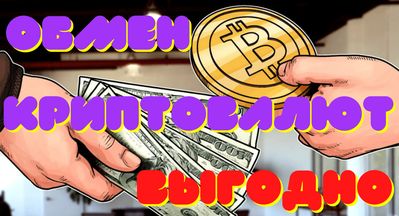Op-ed: Web3 — sense and nonsense

As with any narrative, the Web3 narrative serves certain stakeholders and is in turn, fueled by them to serve their interests.
On one side, it is the venture capitalists facile exhortation at a euphemism for the term that K Street does not favor (“crypto”); on another side it is a half-hearted attempt by the hoi polloi on LinkedIn/Twitter to attach themselves to what they see as the next big thing; on a third side, it is a proactive effort by some entrenched crypto players to piggy-back on the venture capitalists marketing and attempt to legitimize themselves; and, from a fourth side, it is a pre-emptive campaign by the deep-rooted technology industry giants to manage market expectations and position themselves as the inevitable winners of this ostensibly evolutionary trend.
Let us pull the curtain back and demystify what is happening behind the scenes.
The Original (Static) Web: Access to Information, Search and E-Commerce
“Well, I found it frustrating that in those days, there was different information on different computers, but you had to log on to different computers to get at it. Also, sometimes you had to learn a different program on each computer. So, finding out how things worked was really difficult. Often it was just easier to go and ask people when they were having coffee.”
That was his aha moment, and Sir Tim Berners-Lee went on to invent a fundamentally new way to share information using hypertext. He also managed to invent HTML, HTTP, and the ideas behind URI/URLs in his spare time and coded the first web browser (“WorldWideWeb.app”) and the first web server (“httpd”) to boot.
Now, to give credit where credit is due, the prolific inventor Vannevar Bush had earlier envisioned libraries of research with annotations similar to today’s hyperlinks, and it is no accident that link analysis eventually became the cornerstone for search algorithms. Search led to fulfillment i.e., buying and selling over the web, and the advent of SSL 1.0 to secure online transactions sealed the deal, so to say.
We had become online “consumers”. Then modern-day Silicon Valley took over to do what it does best, which is to “capture” value, and we saw what ensued with the dot com bust.
The Second (Dynamic) Web: User-Generated Content, Social Media and Surveillance Capitalism
The Web 2.0 tag emerged as a catch-all phrase to refer to the mushrooming model of enabling consumers to interact and collaborate with each other through “social media”, virally bootstrapped by “user-generated content”. This was in contrast to the first wave of the Web where users were limited to passively “consuming” whatever content was rendered down the HTTP pipe from the website.
Berners-Lee did not like this tagline – he is said to have described it as jargon. But we did not care, and with the advent of Facebook, YouTube, etc. we were enthralled by the new “social” web (VC-jargon) or the “read-write” web (technology industry jargon) and we were all now content creators. Life was good until the realization that no one else was paying either and that we had all now become the “product”.
The prophets who had predicted a shifting away of control back to the user and to the consumer-creator continue to be faced with the reality of a dystopian system of surveillance capitalism; “the unilateral claiming of private human experience as free raw material for translation into behavioral data” to quote Professor Shoshanna Zuboff.
Yes, it is free, but at what cost? Loss of privacy, corporate and state surveillance, undermining and seeding, and feeding distrust at the local, national, and supra-national levels, and sowing division left, right and center. But remember, the ads are personalized, and the behavior manipulation is subliminal to give the devil his due.
The legacy of Web 2.0 will be viewed in how it reconciles its identity as an extraordinary profit-making machine that turned commercial and business models on their head with its own contentious early 21st century role in the American zeitgeist.
Sovereignty: What the Web is not, and what Blockchains are about
“We have proposed a system for electronic transactions without relying on trust”. That was Satoshi Nakamoto’s succinct conclusion in his seminal paper.
A system for electronic transactions without relying on a trusted third party.
That is it. There is nothing in there about the Web, or Web 2.0 or the putative Web 3.0. If you are building a system for electronic transactions without relying on a trusted third party, then by all means use blockchains. Else, go your merry way.
In practical terms, blockchains are economic platforms that enable the development of systems for processing electronic transactions without relying on a trusted third party. Why economic platforms? Because, unlike all traditional computing platforms, blockchain platforms have intrinsic economic incentives that ensure the integrity of the infrastructure.
Now, there are side effects to not relying on a trusted third-party, notably sovereignty i.e., control over relevant (private) data or other assets, capacity to choose where such assets are stored and/or custodied, and the ability to provide access to pertinent data (or not) to those who need it for however long you chose to.
Sovereignty is interesting; it is significant, and it will be essential in the coming years. You know this and I don’t need to say more here.
The community did not need to use the term Web3 until the VC-types showed up; to go full circle, Berners-Lee recently called out that “In fact, Web3 is not the web at all”, and he has his own proposal termed “Web 3.0” to reshape the Internet, to add to the word-salad; perhaps, it is time to drop this baggage and just call it a blockchain. Neither more nor less.







 Bitcoin
Bitcoin  Ethereum
Ethereum  Tether
Tether  USDC
USDC  Dogecoin
Dogecoin  Cardano
Cardano  TRON
TRON  LEO Token
LEO Token  Chainlink
Chainlink  Stellar
Stellar  Hedera
Hedera  Litecoin
Litecoin  Bitcoin Cash
Bitcoin Cash  Monero
Monero  Dai
Dai  OKB
OKB  Gate
Gate  Cronos
Cronos  Ethereum Classic
Ethereum Classic  Cosmos Hub
Cosmos Hub  VeChain
VeChain  Algorand
Algorand  KuCoin
KuCoin  Maker
Maker  Stacks
Stacks  Theta Network
Theta Network  Tether Gold
Tether Gold  Tezos
Tezos  Zcash
Zcash  IOTA
IOTA  TrueUSD
TrueUSD  Polygon
Polygon  NEO
NEO  Dash
Dash  Zilliqa
Zilliqa  Synthetix Network
Synthetix Network  0x Protocol
0x Protocol  Basic Attention
Basic Attention  Qtum
Qtum  DigiByte
DigiByte  Decred
Decred  Holo
Holo  Ravencoin
Ravencoin  Siacoin
Siacoin  Enjin Coin
Enjin Coin  NEM
NEM  Ontology
Ontology  Waves
Waves  Nano
Nano  Hive
Hive  Status
Status  Lisk
Lisk  Pax Dollar
Pax Dollar  Huobi
Huobi  Steem
Steem  Numeraire
Numeraire  BUSD
BUSD  OMG Network
OMG Network  Ren
Ren  Bitcoin Gold
Bitcoin Gold  Bitcoin Diamond
Bitcoin Diamond  Augur
Augur  HUSD
HUSD